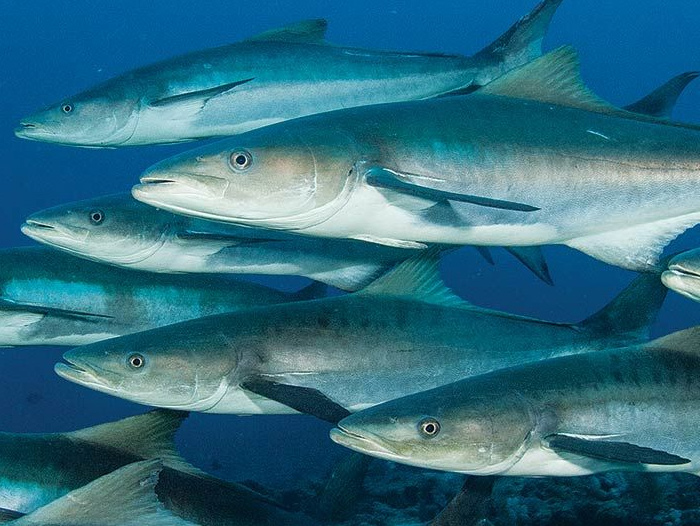NOAA Fisheries Announces Changes to Management of Cobia in Federal Waters of the Atlantic
February 21, 2019 | 4 min to read

NOAA Fisheries announces the final rule to implement Amendment 31 to the Fishery Management Plan for the Coastal Migratory Pelagics of the Gulf of Mexico and Atlantic Region. This final rule removes Atlantic cobia from the fishery management plan. Atlantic cobia is now managed under the purview of the Atlantic States Marine Fisheries Commission because the majority of Atlantic cobia landings are in state waters.
WHEN RULE WILL TAKE EFFECT:
- The final rule will is effective on March 21, 2019.
WHAT THIS MEANS:
- Atlantic cobia is no longer managed under the Coastal Migratory Pelagics Fishery Management Plan.
- Regulations in federal waters will be implemented through the Atlantic Coastal Fisheries Cooperative Management Act.
- Most existing management measures in federal waters for commercial and recreational harvest of Atlantic cobia from Georgia through New York do not change through this rule.
- For the commercial sector, the minimum size limit is 33 inches fork length and the trip limit is two fish per person per day or six fish per vessel per day, whichever is more restrictive.
- For the recreational sector, the minimum size limit is 36 inches fork length and the bag and vessel limits are one fish per person per day or six fish per vessel per day, whichever is more restrictive. For both sectors, persons harvesting Atlantic cobia must comply with more restrictive size limits, bag limits, and possession limits in the states where the fish are landed.
- Fishermen should contact the state for regulations in state waters.
FORMAL FEDERAL REGISTER NAME/NUMBER: Final Rule: 84 FR 4733, published February 19, 2019.
This bulletin serves as a Small Entity Compliance Guide, complying with section 212 of the Small Business Regulatory Enforcement Fairness Act of 1996.
FREQUENTLY ASKED QUESTIONS (FAQs)
Why remove Atlantic cobia from the fishery management plan?
- The majority of Atlantic cobia are caught in state waters.
- NOAA Fisheries closed the 2016 and 2017 federal recreational fishing seasons because the current recreational accountability measure requires NOAA Fisheries to reduce the length of the fishing season in the year following an annual catch limit overage by the amount needed to prevent a similar overage from occurring.
- Despite federal closures, recreational landings have still exceeded the annual catch limit and the combined stock annual catch limit.
- The South Atlantic and Gulf of Mexico Fishery Management Councils and NOAA Fisheries have determined that management of Atlantic cobia by the states through the Atlantic States Marine Fisheries Commission would be more effective at constraining harvest and preventing overfishing; thereby, offering greater biological protection to the population and decreasing adverse socioeconomic effects to fishermen.
- The Atlantic States Marine Fisheries Commission has implemented an Interstate Fishery Management Plan for Atlantic cobia in state waters.
How does this change the regulations of cobia in federal waters?
- Most management measures in federal waters for commercial and recreational harvest of Atlantic cobia in the exclusive economic zone from Georgia through New York do not change.
- For the commercial sector, the minimum size limit is 33 inches fork length and the trip limit is two fish per person per day or six fish per vessel per day, whichever is more restrictive.
- For the recreational sector, the minimum size limit is 36 inches fork length and the bag and vessel limits are one fish per person per day or six fish per vessel per day, whichever is more restrictive.
- For both sectors, persons harvesting Atlantic cobia must comply with more restrictive size limits, bag limits, and possession limits in the states where the fish are landed.
- Fishermen should contact the state for regulations in state waters.
Where can I find more information on the amendment, environmental assessment, and the final rule?
- Contact NOAA Fisheries, Southeast Regional Office
By Mail: Karla Gore
NOAA Fisheries, Southeast Regional Office
Sustainable Fisheries Division
263 13th Avenue South
St. Petersburg, Florida 33701-5505
By FAX: (727) 824-5308
By Phone: (727) 824-5305
- The amendment, environmental assessment, and rules may be found online at the NOAA Fisheries Southeast Regional Office Web site at: https://www.fisheries.noaa.gov/action/coastal-migratory-pelagics-amendment-31-management-atlantic-migratory-group-cobia
